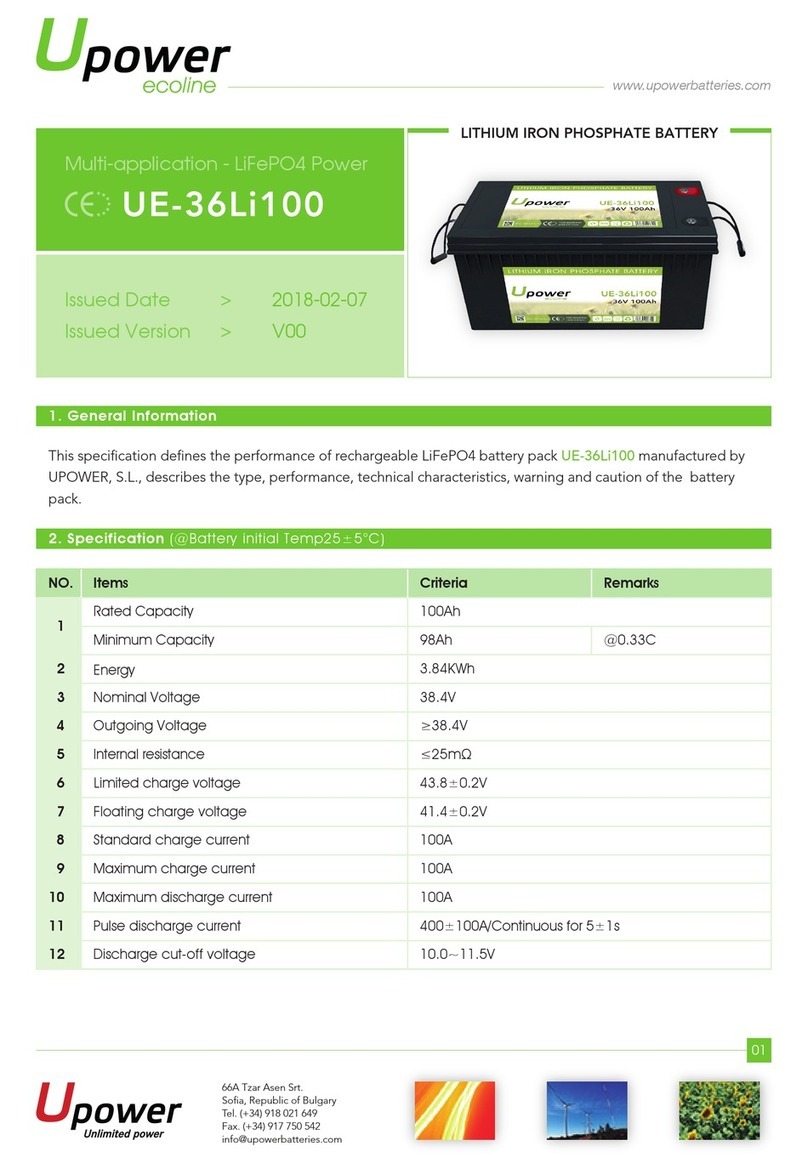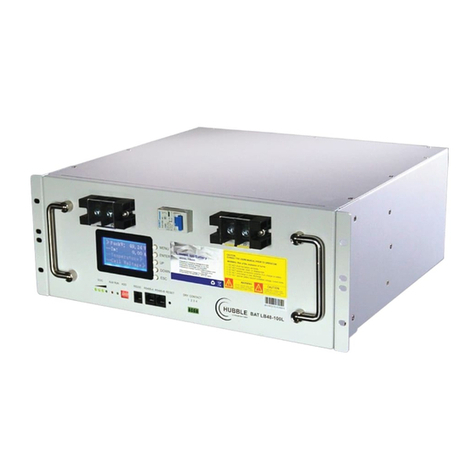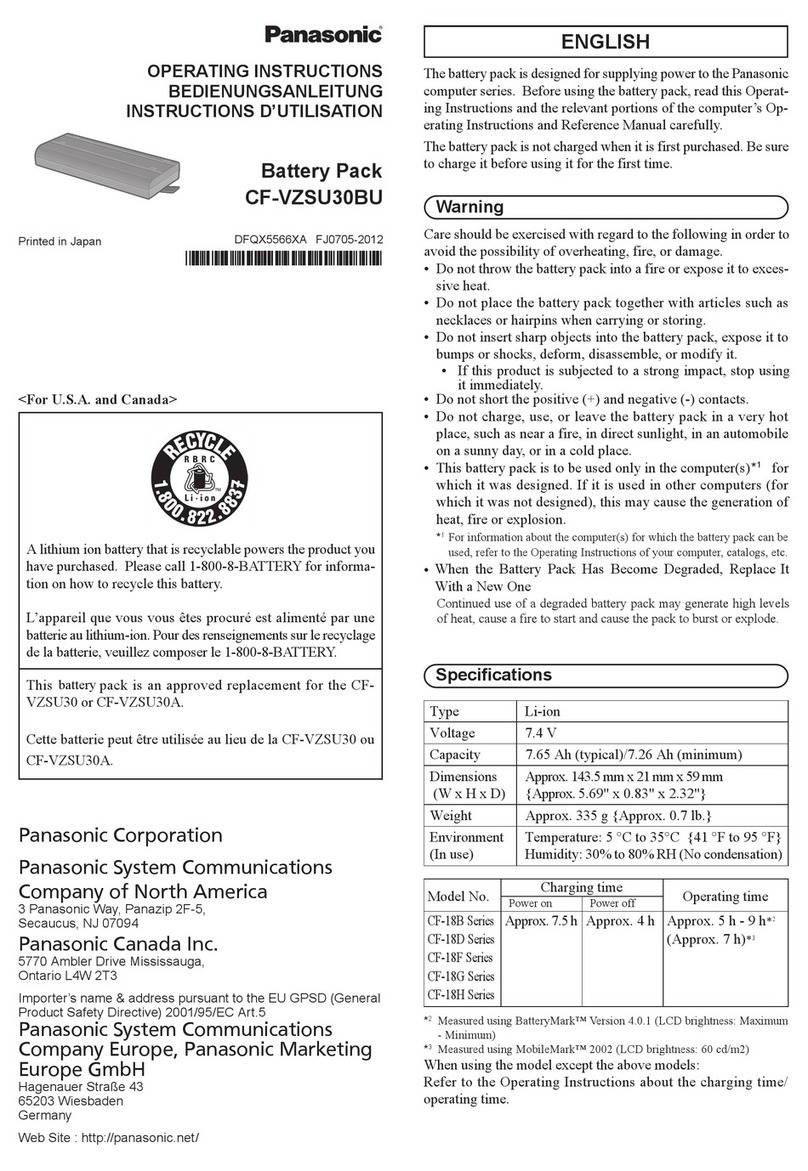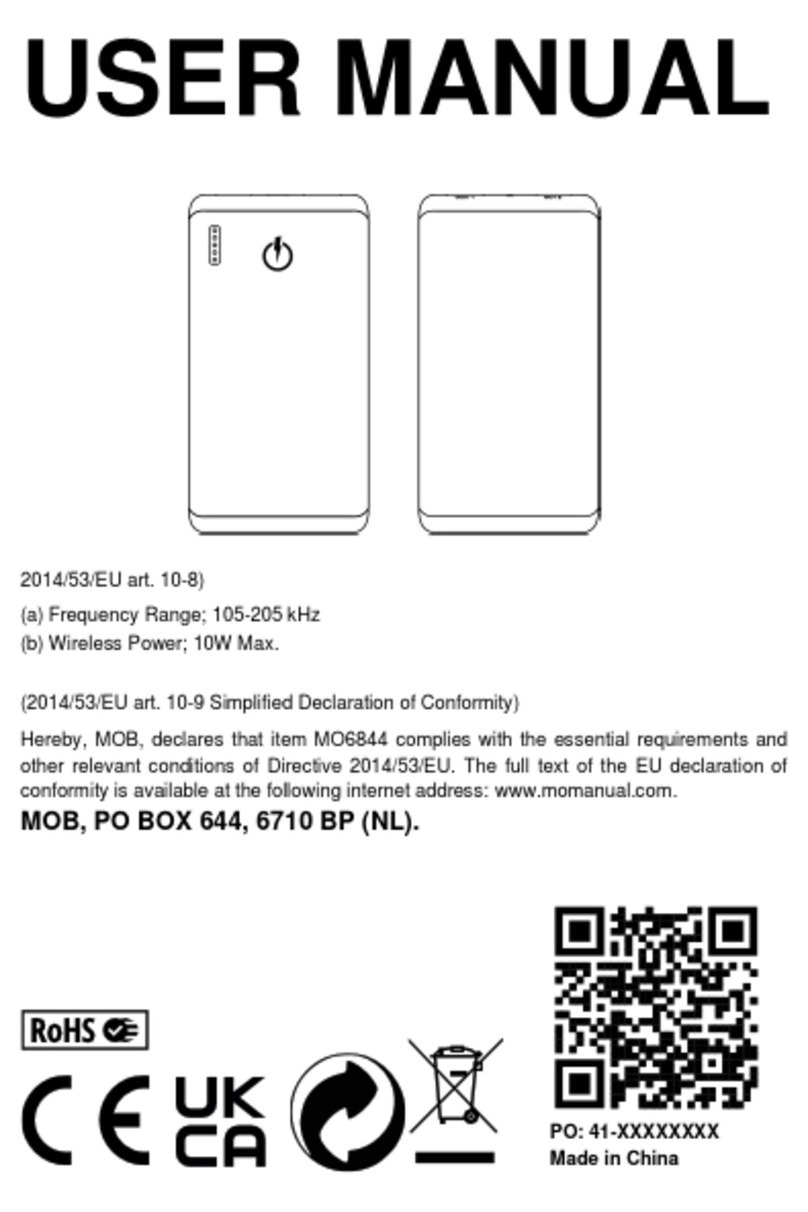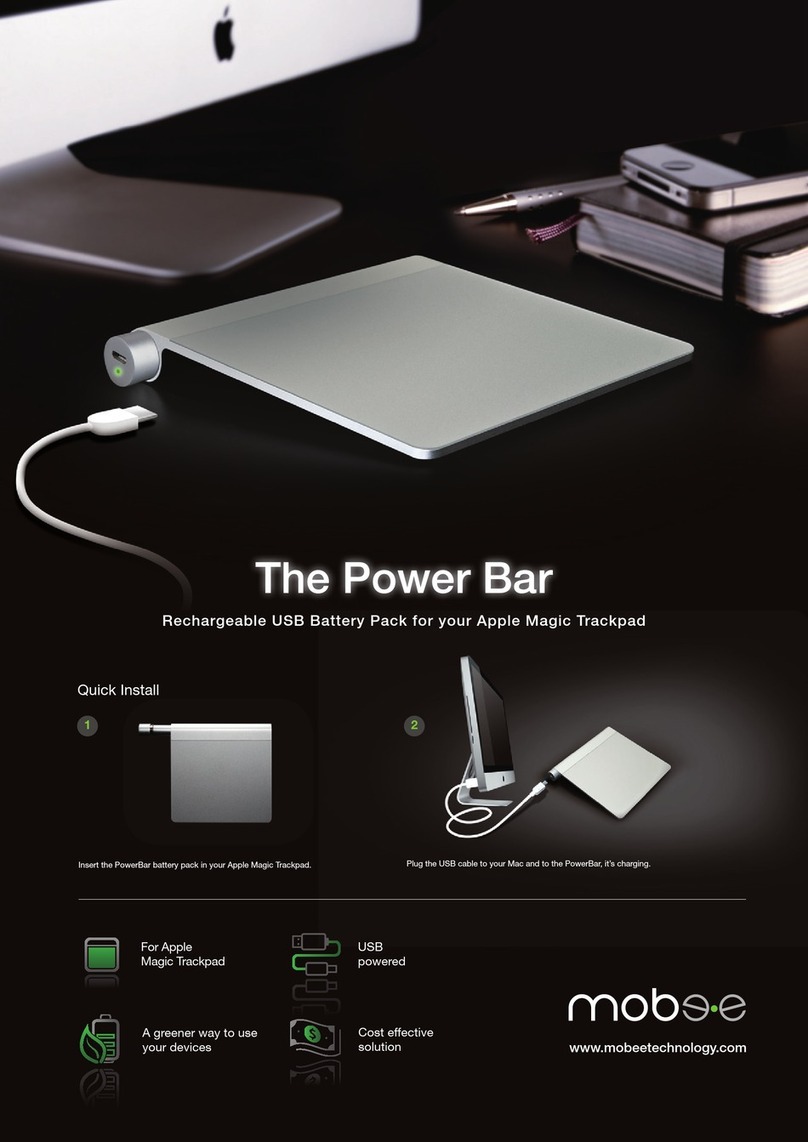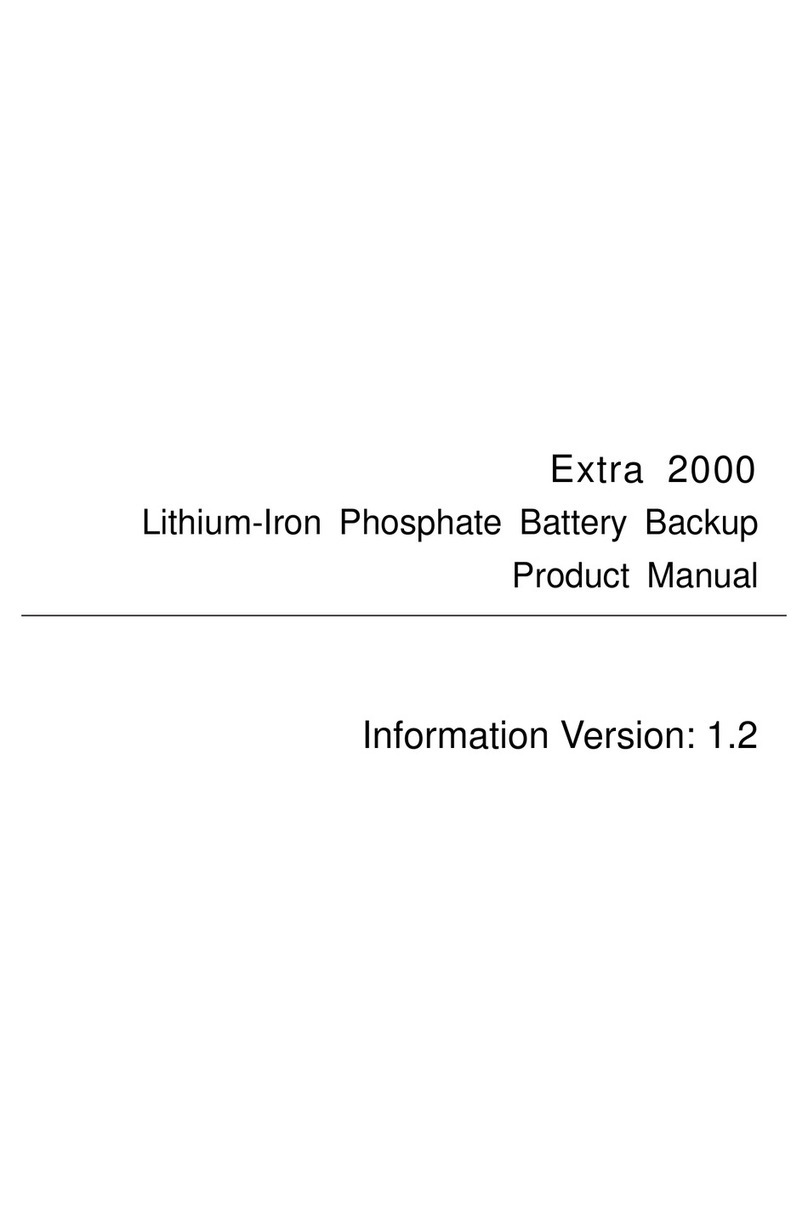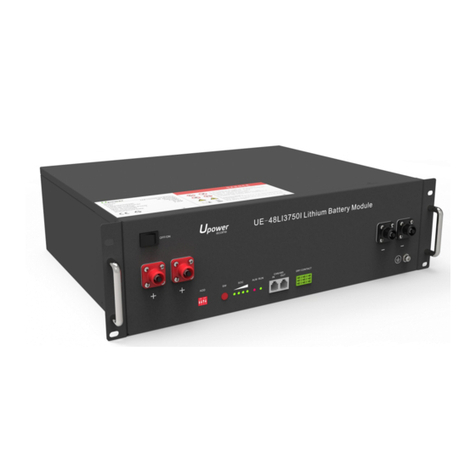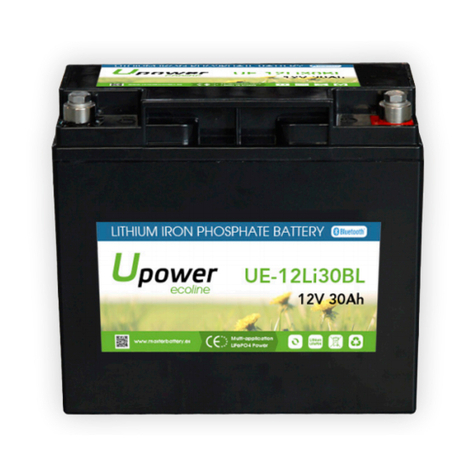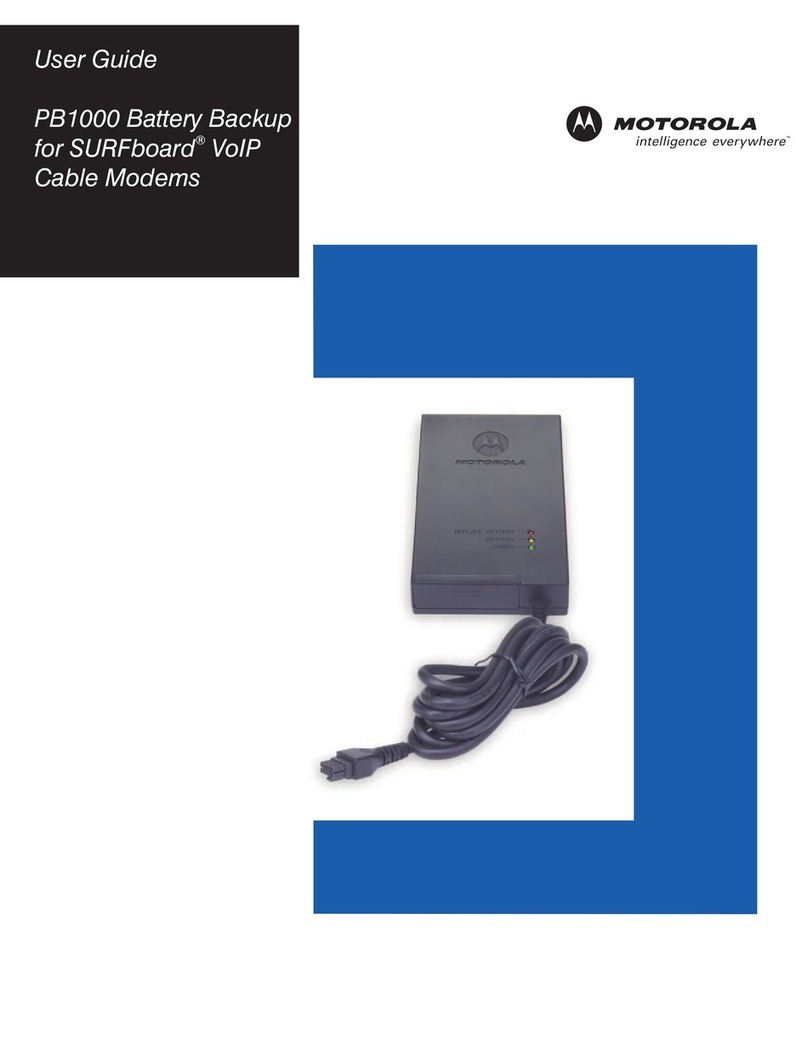Linergy Flexi Series Guide

TM
12.8V LiFePo4 Batteries
Flexi Series User & Installation Manual
LFS12.8V-8AH |LFS12.8V-50AH |LFS12.8V-100AH |LFS12.8V-200AH
TM
(+27) 861-428-711
info@livestainable.co.za
298 Issie Smuts street, Garsfontein
Pretoria East, 0081
www.linergy.co.za
DOWNLOAD APPDATASHEET

54
www.linergy.co.zawww.linergy.co.za
INTRODUCTION
This manual is intended to aid an installer or user with the installation,
commissioning and operation of the LiNERGY FLEXi (LiFePO4) 12V General
Purpose “lead replacement” batteries.
This manual does not attempt to cover all the details pertaining to the setup
of third-party equip-ment in relation to setup and operation with the 12V
battery. Assistance is available at the contact details mentioned on the last
page to provide direct support where necessary for supported third party
brands.
Thank you for choosing the LiNERGY (Lithium Energy) 12.8V Flexi Series
range of batteries. You have chosen a product that is good for our planet,
great for our people and can be used anywhere your heart lies, home or….
We pride ourselves in knowing that we provide unmatched safety,
unwavering reliability and second to none batteries that deliver on life design
expectations.
All the internal and external components of our batteries are rst life quality.
Built with the latest lightweight high energy density prismatic and cylindrical
cells.
Built in world leading BMS with industry leading customization options
ensures that our battery will suit any of your needs.
With LiNERGY, what you see is not only what you get. You have the freedom
of choosing more. Speak with our team to discuss our possible upgrades on
the already great offerings.
The LiNERGY FLEXi series are available in most standard sizes to meet
most 12V applications. Ranging from 8Ah to 200Ah. All models operate
at a nominal voltage of 12,8V, which suits the most com-monly available
residential battery inverters and is also matched to vehicle 12V alternators.
TABLE OF CONTENTS
INTRODUCTION 5
TYPICAL 3D EXPLOSION 6
SAFETY PRECAUTIONS 6
FEATURES 8
CELL FEATURES 8
BMS DESIGN FEATURES 8
BMS SAFETY FEATURES 8
APPLICATIONS 9
INSTALLATION & USE 9
CONNECTING THE BATTERY 9
CHARGING 10
DISCHARGING 12
SERIES & PARALLEL CONNECTIONS 14
SERIES 14
PARALLEL 16
PACKAGING AND TRANSPORT 17
COMPETITIVE INFORMATION 20
LIMITED LIFETIME WARRANTY 21

76
www.linergy.co.zawww.linergy.co.za
TYPICAL 3D EXPLOSION
SAFETY PRECAUTIONS
It is important and necessary to read the user manual carefully before
installing or using the battery(s). Failure to do so or to follow any of the
instructions or warnings in this document can re-sult in electrical shock,
serious injury, or death, or can damage the battery, potentially rendering it
inoperable and voiding your warranty.
ATTENTIONS & WARNINGS
■Upon receiving, please check the battery for any malformation, cracks or
corrosion. Do Not use the battery if you nd any damage on it.
■Do not disassemble, open or attempt to repair the battery. If you are
experiencing errors with the battery, please contact the merchant.
■Do not short circuit the battery terminals, wires connected to it or do any
reverse polarity connections.
■Do not use the battery near excessive heat sources, close to gas storage
facilities or any ex-plosive atmospheres.
■Do not submerge the battery in water.
■Do not strike the battery with any hard objects.
■Do not use the battery as a workbench. Please refrain from leaving tools
and equipment on the battery.
■Do not penetrate the battery enclosure.
■Do not use any damaged cables or connections on the battery.
■Do not allow the battery to freeze and do not charge the battery under 0
degrees Celsius.
■At the end of the design life cycle please dispose of the battery in
accordance with local laws and regulations.
■Only use suitable LifePo4 battery chargers.
■Do not carry the battery while wearing loose jewellery.
■Do not use the battery as a step.
■Do not connect this battery in series or parallel with any older batteries
and no batteries that are not of the same brand and group numbers.
■Do not use the battery for cranking applications. (To start an engine)
■Do not connect the battery directly to an alternator. (Only use approved
DC-DC chargers)
■Keep the battery away from reach of children.
■Do not place the battery in direct sunlight.
■Immediately discontinue use of the battery if, while using, charging or
storing the battery, the battery emits an unusual smell, feels hot, changes
colour or shape, or appears abnormal in any way.
■Do not place the battery in high pressure areas or chambers.
■Always ensure you are using the correct size cables for your battery.
■Do not use cleaning solvents to clean the battery.
■Do not paint the battery or any part of the battery.
■Do not connect solar panels directly to the battery. Only use approved
PWM or MPPT Solar Charge controllers.
■Do not connect the battery directly to any AC power source. Use only
approved chargers/inverters or common DC Busbars.
■Do not insert or attach any foreign objects in or on the battery.
■In case of re, use only dry powder re extinguishers. Liquid extinguishing
methods are pro-hibited.
■The warranty claims are excluded for direct or indirect damage due to
items above.
Figure 1.1

98
www.linergy.co.zawww.linergy.co.za
FEATURES
CELL FEATURES
■Extremely high cycle life LiFePo4 cells. Up to 6000 Cycles
■No Maintenance required on the cells.
■Unmatched high and low temperature performance.
■Cells operate safely on a high charge and discharge rate.
■Stable output voltage.
■ High energy density = lightweight congurations with great capacity
■ Cells do not explode or cause re when crushed, punctured or drop tested.
Unlike NMC, Pol-ymer etc cells.
■Low internal resistance.
■The warranty claims are excluded for direct or indirect damage due to
items above.
BMS DESIGN FEATURES
■Solid state design with no internal moving parts.
■ Integrated Bluetooth function for easy monitoring and conguration.
■Bluetooth dongle soldered to PCB to decrease loose components.
■Integrated heatsink to dissipate heat quickly.
■Integrated cell balancing function.
BMS SAFETY FEATURES
■Short Circuit Protection
■Overcharge Voltage protection
■Over discharge voltage protection
■Charge over current protection
■Discharge over current protection
■Low temperature charge protection
■Low temperature discharge protection
■High temperature charge protection
■High temperature discharge protection.
■ Optional* built in self-re extinguishing device.
APPLICATIONS
Our LiNERGY FLEXi range are suitable for the following applications:
■ Residential or Ofce backup power solutions
■Auxiliary battery in boats, trailers, RV’s, Caravans, Canopies etc.
■Can also be used in an engine bay as an auxiliary battery.
■The smaller 8AH model can be used in Garage motors, Alarm systems,
CCTV systems etc.
■Portable power supplies on site or out camping.
■Street lighting applications with solar charging.
■Telephone towers.
■Other small traction applications.
The range can be mounted in any orientation with medium to high
vibration toleration. We have carefully designed the internal structure of the
components assembly to ensure no moving of parts are possible within the
battery case and within reasonable handling.
INSTALLATION & USE
CONNECTING THE BATTERY
The 12.8V FLEXi range is protected internally using solid state electronics.
These electronics will not resist extreme operation or abuse outside of the
limits given in this document. It is thus important to connect these batteries
to suitable equipment. The following points are of primary relevance:
* The connected equipment must not cause excessive inrush current when
connected to the battery – should excessive inrush current (from inverter
capacitors for example) be suspected, the DC bus must be pre-charged
using a 50-100 Ohm 100W resistor before connecting the battery onto the
DC bus
* The inverter or other load(s) must not be capable of exceeding the current
ratings in the specica-tion sheet for discharge and must be set correctly
for the maximum charge current, which is possible in most devices. For
chargers where it is not possible to limit the charge current the model
selected must not be capable of delivering a current higher than the
standard charge current given in the specication table.
* It is imperative that the correct nominal DC voltage is selected on the
connected equipment i.e. 12V, 24V, 36V or 48V.
* Please note: The FLEXi range is not designed for, or capable of, starting
internal combustion en-gines. The cranking current demands are far too
high.

1110
www.linergy.co.zawww.linergy.co.za
CHARGING
LifePo4 batteries charge with a different algorithm and voltage then it’s
AGM, Gel or Lead-Acid counterparts. Therefore, it is recommended to study
the datasheet supplied with your battery for important charging voltage
scenarios. We recommend the following charging pa-rameters for our 12.8V
range.
* Bulk Voltage: 14.4 – 14.6V
* Float should be disabled as Lithium batteries don’t require this, but if you
do not have that option available, please set Float to 13.8V
* Storage: 13.8V
Do not use any battery charger, always ensure you have lithium compatible
charger. Please also al-ways ensure that DE sulfation, reconditioning and
equalization is disabled for lithium batteries.
For batteries connected in series, please use the following table as a
guideline for charge voltages:
Please always ensure that you do not exceed the maximum charge currents as per the datasheet:
Figure 1.3
Always conrm the battery charger specications are suitable for the battery you are charging, and you should
always follow the instructions received with your battery charger.
Series Recommended
Charge Voltage Maximum Range
12V (12.8V) 14.4V up to 14.6V
24V (25.6V) 28.8V up to 29.2V
48V (15 Cell) (48V) 54V up to 54.7V
48V (16 Cell) (51.2V) 57.6V up to 58.4V
Figure 1.2
GENERAL SPECIFICATIONS
Option: 12.8V 8Ah 12.8V 50Ah Plus 12.8V 100Ah Plus 12.8V 200Ah Plus 12.8V 200Ah Plus
Optional Upgrade
CHARGING
Recommended Bulk Charge Voltage : 14.4V
Max Bulk Charge Voltage: 14.6V
Float Voltage: 13.8V (Disable oat if possible*)
Storage Voltage: 13.8V
Lessthan0°C No Charge Allowed
0-5°C--(0.2C) 1.6A 10A 20A 40A
5-15°C--(0.5C) 4A 25A 50A 100A
15-45°C--(1C) 8A 60A 120A 200A
45-55°C--(0.2C) 1.6A 10A 20A 40A
55°C+-- No Charge Allowed
BMS Overcurrent Charge Protection: 20A-30A 70A 155A 220A
BMS Overvoltage Protection: 14.8V
BMS Temperature Protection: Operating Temperature -20°C to 75°C
ChargeEfciency: 98%

1312
www.linergy.co.zawww.linergy.co.za
DISCHARGING
It is very important to always use the correct wire thickness for both charge
and discharging of your battery. Failure to do so will cause unfavourable
internal resistance, unstable currents and may lead to re.
Please follow the below cable thickness guideline. (Based on a 1m cable
length, not consider-ing voltage drop of 3% p/m.
Figure 1.4
We always recommend using appropriate fusing on your battery for at least
10% lower than the max discharge current rating of your battery. This not
only ensures that wiring is kept in check but also helps prolong the battery
life by not abusing the BMS when excessive acci-dental discharge occurs.
Figure 1.5
Please ensure that the negative and positive wires connected to the battery
and load/dc busbar are of equal length.
Battery Max Discharge Wire Size (sq.
mm) AWG
12.8V 8Ah 15Amps 2.5 14
12.8V50Ah 60Amps 16 6
12.8V100Ah 120Amps 25 2
12.8V200Ah 120Amps 25 2
12.8V200Ah
(Upgraded) 200Amps 70 000
Battery Recommended Fuse Size
12.8V 8Ah 10Amps
12.8V50Ah 50Amps
12.8V100Ah 100Amps
12.8V200Ah 100Amps
12.8V200Ah(Upgraded) 175Amps
Please always ensure that you nod not exceed the maximum discharge currents as per the datasheet:
Figure 1.6
GENERAL SPECIFICATIONS
Option: 12.8V 8Ah 12.8V 50Ah Plus 12.8V 100Ah Plus 12.8V 200Ah Plus 12.8V 200Ah Plus
Optional Upgrade
DISCHARGING
LowVoltageCut-Off: 9.2V 9.2V Cut-Off Voltage (BMS PROGRAMMABLE TO 8V)
Low Voltage Recovery: 11.2V
Recovery Condition: Disconnect The
Load or Charge Auto Recover after 32 Seconds
Continuous Discharge Current: Up to 15A Up to 50A Up to 120A Up to 200A
BMS Overcurrent Discharge
Protection: 30A 70A 155A 220A

1514
www.linergy.co.zawww.linergy.co.za
Figure 1.7
Please ensure that the negative and positive wires connected to the battery
and load/dc busbar are of equal length.
SERIES & PARALLEL CONNECTIONS
Our FLEXi series range are generally intended for use as a standalone system.
E.g., where only one battery is used in the system. However, series and
parallel connections are allowed.
SERIES
Our batteries are series compatible up to 48V (51.2V). Series Connections can
be made in 24V (25.6V), 36V (38.4) and 48V (51.2V). Please follow the table
below for connecting batteries in series:
Figure 1.9
Here is a general wiring diagram for connecting the batteries in series:
Figure 1.10
The following is essential when connecting batteries in series.
■Before connecting the batteries in series, they need to be balanced. So,
each battery must be fully charged to the same voltage. We recommend
14.2V. Ensure that they are charged up to the same voltage on the same
day of installation. (This will negate self-consumption of the batteries that
could lead to imbalance over extended hours.
■The DC wiring connecting your battery packs should be no shorter than
250mm. This pre-vents heat transfer from one terminal to another.
■All cables should be of equal sq.mm /AWG and the exact same length.
(Refer to the charge and discharge cable size table (gure 1.4) for the
correct cable thickness)
■When connected in series, the maximum current values provided in the
datasheet, should be re-graded to 80% of the provided parameters to
cater for series connection dynamics be-tween the batteries. E.g., different
battery internal resistance, less than 100% equal cell den-sity etc.
It is mandatory to connect batteries in series with battery balancers to not
void the warranty. Battery balancers will ensure that each battery is always
in perfect balance with the rest of the pack. Please see below example
diagrams of batteries connected in series with balancers:
Figure 1.8
Battery Max Discharge in Watts
12.8V 8Ah 198
12.8V50Ah 792
12.8V100Ah 1584
12.8V200Ah 1584
12.8V200Ah+ 2640
Conguration Actual Nominal Volt-
age Battery Count
24V 25.6 2
36V 38.4 3
48V 51.2 4

1716
www.linergy.co.zawww.linergy.co.za
Follow the below guidelines for max charge and discharge values for
batteries in series.
Cong. Bulk Charge
Voltage
Float
Voltage
Max Charge
Current
Max
Discharge
Current
24V 28.8V 27.6
80% Of Rated Current
36V 43.2V 41.4V
48V 57.6V 55.2V
Figure 1.11
PARALLEL
Our batteries are parallel compatible only in the sense to increase usable
capacity of the batteries. They are not compatible with increased currents
when connecting parallel.
The following is essential when connecting batteries in parallel:
■Each of the batteries need to be the same voltage or within 0.2V before
being connected in parallel.
■The total maximum charge/discharge current of the whole pack should
not exceed the rated currents provided for a single battery.
■Each battery must have the same group number (batch number) and be
of the same capaci-ty)
■Each battery must be of a similar age or less than 3 years apart)
■The DC wiring connecting your battery packs should be no shorter than
250mm. This pre-vents heat transfer from one terminal to another.
■All cables should be of equal
sq.mm /AWG and the exact
same length. (Refer to the
charge and discharge cable size
table (gure 1.4) for the correct
cable thickness)
■The maximum charge voltage
for our 12.8V batteries connected
in parallel is 14.4-14.6V.
Here is a general wiring diagram for
connecting batteries in parallel:
Figure 1.12
PACKAGING AND TRANSPORT
All batteries are adequately packaged in strong UN38 cardboard boxes with
thick protective foam all around. We typically ship the battery to your door
depending on how you chose to purchase. The batteries are usually shipped
at a 20% SOC (State of charge) and therefore require a full recharge be-fore
use.

1918
www.linergy.co.zawww.linergy.co.za
TechnicalSpecications
GENERAL SPECIFICATIONS
Option: 12.8V 8Ah 12.8V 50Ah Plus 12.8V 100Ah Plus 12.8V 200Ah Plus 12.8V 200Ah Plus
Optional Upgrade
CHARGING
Recommended Bulk Charge Voltage : 14.4V
Max Bulk Charge Voltage: 14.6V
Float Voltage: 13.8V (Disable oat if possible*)
Storage Voltage: 13.8V
Lessthan0°C No Charge Allowed
0-5°C--(0.2C) 1.6A 10A 20A 40A
5-15°C--(0.5C) 4A 25A 50A 100A
15-45°C--(1C) 8A 60A 120A 200A
45-55°C--(0.2C) 1.6A 10A 20A 40A
55°C+-- No Charge Allowed
BMS Overcurrent Charge Protection: 20A-30A 70A 155A 220A
BMS Overvoltage Protection: 14.8V
BMS Temperature Protection: Operating Temperature -20°C to 75°C
ChargeEfciency: 98%
DISCHARGING
LowVoltageCut-Off: 9.2V 9.2V Cut-Off Voltage (BMS PROGRAMMABLE TO 8V)
Low Voltage Recovery: 11.2V
Recovery Condition: Disconnect The
Load or Charge Auto Recover after 32 Seconds
Continuous Discharge Current: Up to 15A Up to 50A Up to 120A Up to 200A
BMS Overcurrent Discharge
Protection: 30A 70A 155A 220A
GENERAL SPECIFICATIONS
Option: 12.8V 8Ah 12.8V 50Ah Plus 12.8V 100Ah Plus 12.8V 200Ah Plus 12.8V 200Ah Plus
Optional Upgrade
FUNCTIONAL SPECIFICATIONS
Battery Terminals: T2 M8
Protection Class: IP65 Water and Dust Resistant
Series Compatible: Yes, up to 4S Yes, up to 4S. (All upgraded models)
Parallel Compatible: Yes, up to 4P or 4S4P (Do not increase operational currents) Yes, up to 4P or 4S4P (All upgraded mod-
els)
Self Discharge: 3.5% per month
Storage Capacity: 50%
Recharge cycles: As needed or every 60 days if not in use.
Cell Chemistry: LiFePo4
Cell Form: Cylindrical Prismatic Prismatic Prismatic Prismatic
Cell Structure: x8 x4 x4 x8 x9
Battery Dimensions (L*W*H) 15.1*6.5*9.35cm 26*16.8*21.1cm 33*17.2*21.4cm 52.2*24*21.9cm 52.2*24*21.9cm
Nett Weight: 1Kg 6.5Kg 11.3Kg 21.75Kg 21.75Kg
Cell Balancing Method: Passive (Pulse Equalization)
Cell Balancing Current: 35mA 250mA
Cell Balancing Activation Voltage: 15mV Δ
BMS Short Circiut Protection: Yes
BMS General Low Temp Protection: Yes
BMS General High Temp Protection: Yes
Warranty: Limited Lifetime Warranty, rated at 80% capacity of the battery cells.
Figure 1.13.1
Figure 1.13.2

2120
www.linergy.co.zawww.linergy.co.za
COMPETITIVE INFORMATION LIMITED LIFETIME WARRANTY
The warranty for LiNERGY FLEXi Series is extended to the original purchaser
or user and it covers de-fects in materials and workmanship. The warranty is
a limited lifetime warranty of the battery cells, rated at 80% of the capacity
(100Ah x .8 = 80Ah), meaning when its capacity is down to 80%.
Under extreme use (maximum charge and discharge rates) the battery
cells expected life cycle is 2000. That means if you use the battery every day
and discharge it nearly 100% it would take ap-proximately 5 years to get the
battery cells to 80% capacity. What about using it every other day – 20 years;
every three days – 30 years and so on. At “normal usage” the expected life
cycles will be greater.
Here are some life design expectations:
For further information related to the warranty, please download the
warranty form from the merchant’s website.
Comparing a
100AhBattery GEL AGM Lead LiFePO4
Nominal
Voltage 12V 12V 12V 12.8V
Charging
Voltage 14 14.6 14.8 14.4-14.6
Life Cycles @
50% DOD 500-600 cycles 500-600 cycles 500-600 cycles >6000 cycles
Constant
Output Voltage No No No Yes
BMS No No No Yes
Mounting
Orientation Any Any Limited Any
Capacity 50Ah 50Ah 50Ah 100Ah
Watt Hours 600 @ 50%
DOD
600 @ 50%
DOD
600 @ 50%
DOD
1280 @
100%DOD
Parallel Wiring Yes Yes Yes Yes
Series Wiring Yes Yes Yes Yes
Recommended
DOD 50% 50% 50% Not applicable
GUARANTEED DESIGN LIFE @ DOD (DEPTH OF DISCHARGE) | 1C DISCHARGE RATE
(1C=100%CURRENTOFSTANDARDCAPACITY)
100% DOD UP TO 2000 CYCLES @1C | 25±2°C 5 YEAR DESIGN LIFE BASED ON 1X CYCLE
P/DAY
80% DOD UP TO 2400 CYCLES @1C | 25±2°C 6 YEAR DESIGN LIFE BASED ON 1X CYCLE
P/DAY
50% DOD UP TO 3000 CYCLES @1C | 25±2°C 8 YEAR DESIGN LIFE BASED ON 1X CYCLE
P/DAY
FORECASTEDDESIGNLIFE@DOD(DEPTHOFDISCHARGE)|0.2CDISCHARGERATE
(0.2C=20%CURRENTOFSTANDARDCAPACITY)
100% DOD UP TO 4000 CYCLES @0.2C | 25±2°C 10 YEAR DESIGN LIFE BASED ON 1X
CYCLE P/DAY
80% DOD UP TO 4800 CYCLES @0.2C | 25±2°C 13 YEAR DESIGN LIFE BASED ON 1X
CYCLE P/DAY
50% DOD UP TO 6000 CYCLES @0.2C | 25±2°C 16 YEAR DESIGN LIFE BASED ON 1X
CYCLE P/DAY
Please use the design life gures as a guideline only. Actual results may vary depending on
charging, discharging, ambi-ent temperatures etc.
Figure 1.14
Figure 1.15
This manual suits for next models
4
Table of contents
Popular Batteries Pack manuals by other brands

Dragonfly Energy
Dragonfly Energy Battle born BB5024H User manual & installation guide
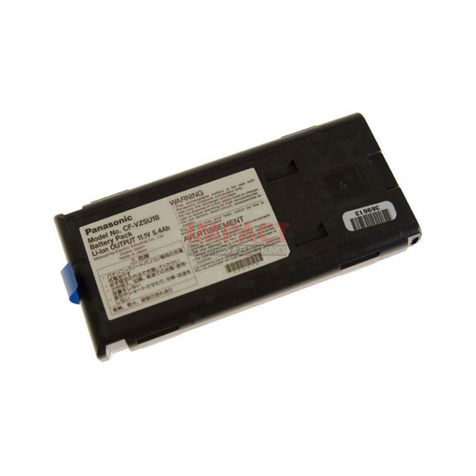
Panasonic
Panasonic CF-VZSU18BU operating instructions

Growatt
Growatt INFINITY 1300 user manual

Belkin
Belkin TunePower F8Z088ea user manual
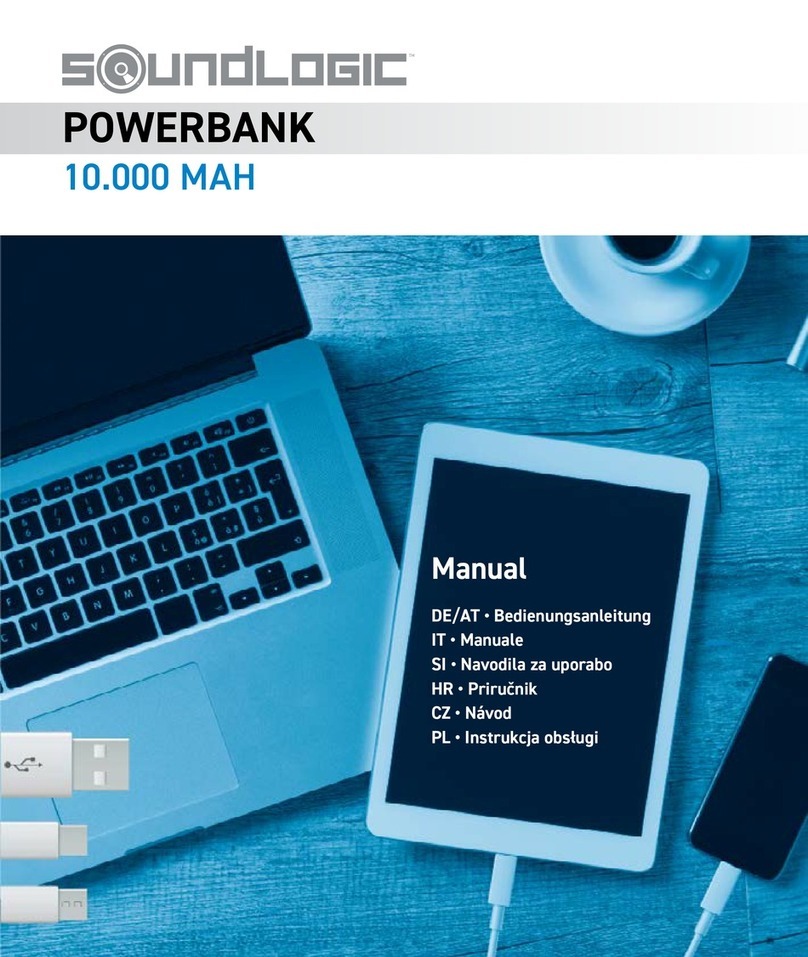
SoundLogic
SoundLogic 80392 manual
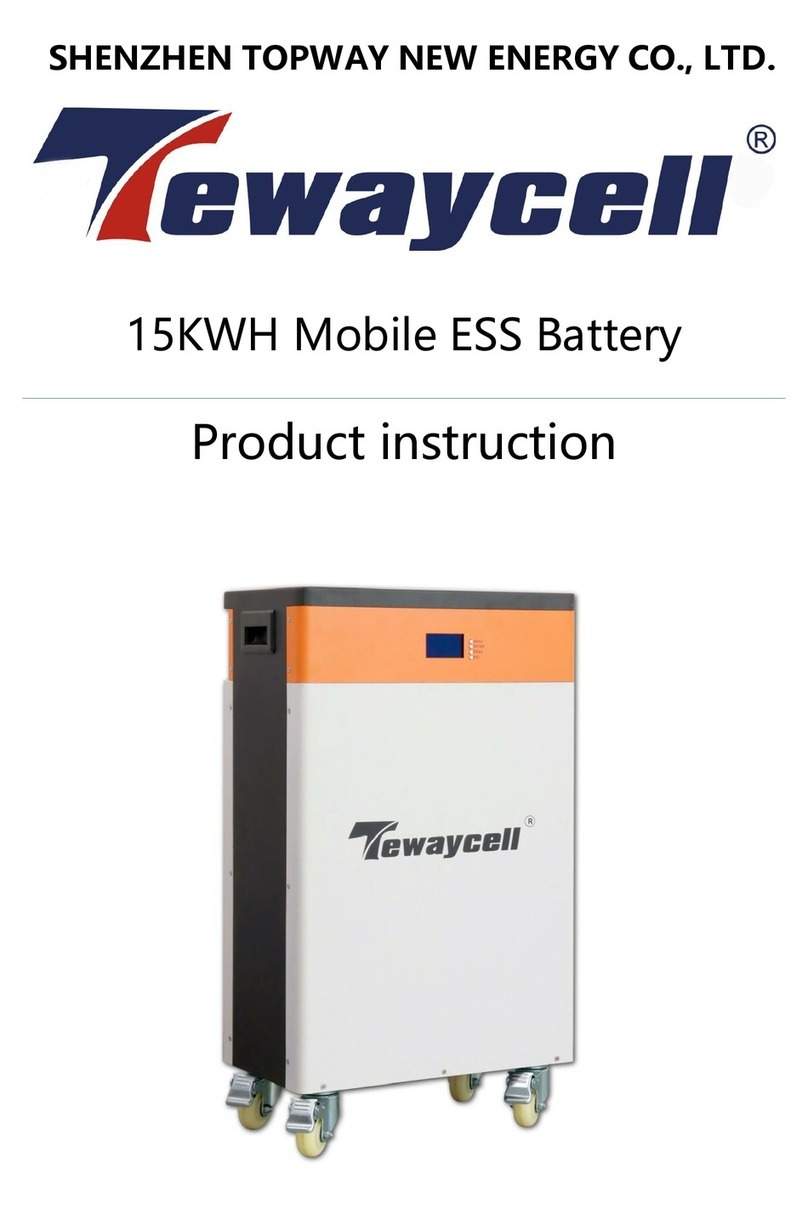
Topway
Topway Tewaycell TW-MB-51300-100A-HBW Product Instruction

